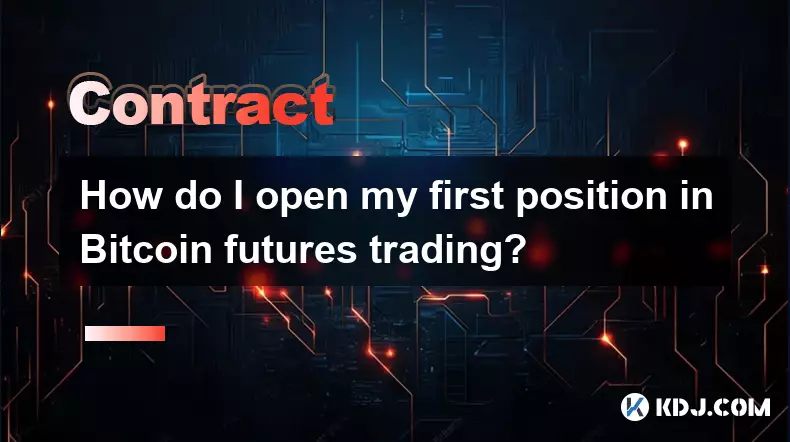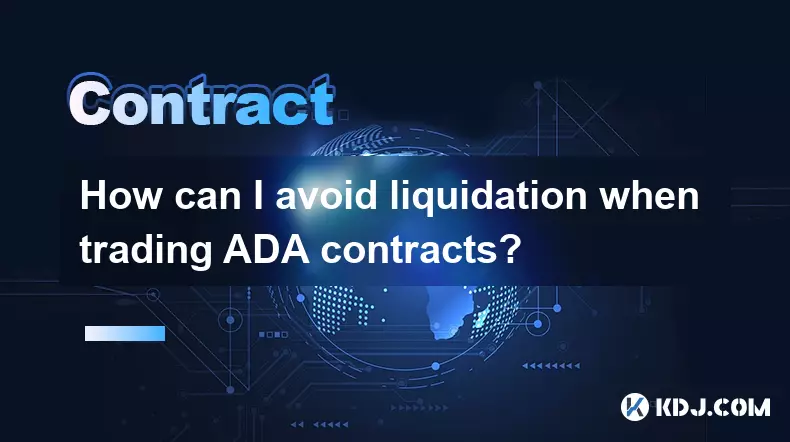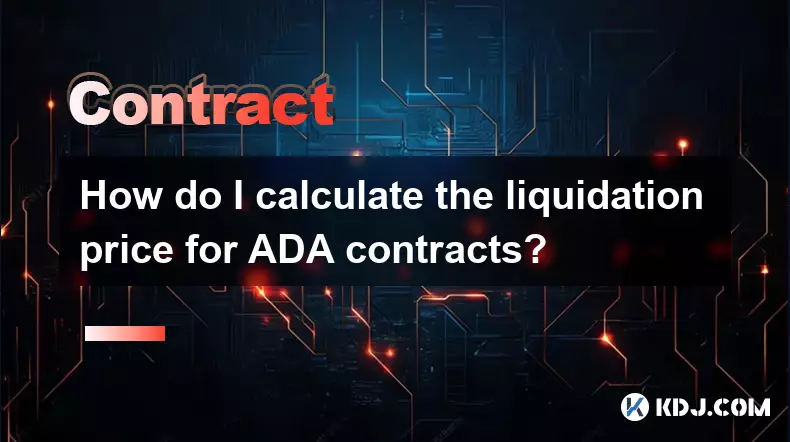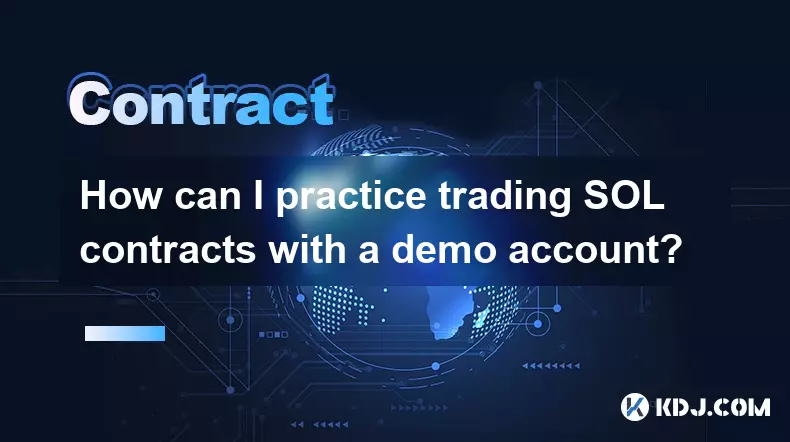-
 bitcoin
bitcoin $108842.957301 USD
-1.88% -
 ethereum
ethereum $3931.777121 USD
-1.66% -
 tether
tether $1.000186 USD
-0.03% -
 bnb
bnb $1153.250882 USD
-2.20% -
 xrp
xrp $2.367904 USD
-1.94% -
 solana
solana $186.182050 USD
-4.20% -
 usd-coin
usd-coin $0.999997 USD
0.00% -
 tron
tron $0.316949 USD
-1.00% -
 dogecoin
dogecoin $0.190780 USD
-3.12% -
 cardano
cardano $0.651324 USD
-2.67% -
 hyperliquid
hyperliquid $37.141055 USD
-0.85% -
 ethena-usde
ethena-usde $0.999224 USD
-0.09% -
 chainlink
chainlink $17.579031 USD
-2.47% -
 bitcoin-cash
bitcoin-cash $509.426284 USD
-2.79% -
 stellar
stellar $0.315298 USD
-2.93%
How do I open my first position in Bitcoin futures trading?
Bitcoin futures allow traders to speculate on BTC's future price using leverage, with key risks and strategies around margin, liquidation, and funding rates.
Oct 09, 2025 at 03:20 am

Understanding Bitcoin Futures Contracts
1. Bitcoin futures are derivative contracts that allow traders to speculate on the future price of Bitcoin without owning the underlying asset. These contracts are traded on regulated exchanges such as CME, Deribit, and Binance Futures. Each contract has a predetermined expiration date and settlement mechanism, either in cash or physical delivery.
2. Before opening a position, it’s essential to understand key terms like leverage, margin, long and short positions, and liquidation price. Leverage allows you to control a larger position with a smaller amount of capital, but it also amplifies both gains and losses.
3. Selecting the right futures contract type is crucial. Perpetual futures do not have an expiry date and are more popular among retail traders due to continuous trading. Quarterly futures expire on set dates and are often used by institutional players for hedging purposes.
4. Familiarize yourself with the order types available: limit orders, market orders, stop-market, and take-profit orders. Using these correctly helps manage entry and exit points efficiently.
5. Always check the funding rate in perpetual contracts, as it affects holding costs. Positive funding rates mean longs pay shorts, while negative rates mean shorts pay longs. This impacts your net profit if you hold positions over extended periods.
Selecting a Reliable Futures Exchange
1. Choose a platform with strong security protocols, high liquidity, transparent fee structures, and responsive customer support. Exchanges like Bybit, OKX, and BitMEX offer robust futures trading environments tailored for different experience levels.
2. Verify whether the exchange supports your preferred deposit methods—USDT, BTC, ETH, or fiat. Also, ensure the platform offers the leverage range you’re comfortable with, typically from 2x to 125x depending on risk tolerance.
3. Review the exchange’s historical uptime and incident reports. Frequent outages during volatile markets can lead to slippage or missed liquidations, resulting in unexpected losses.
4. Look into insurance funds and risk provision mechanisms. Platforms with deep insurance pools reduce the chance of auto-deleveraging events affecting your position during extreme volatility.
5. Test the trading interface using a demo or testnet version if available. A clutter-free UI with real-time depth charts, open interest data, and liquidation heatmaps enhances decision-making accuracy.
Executing Your First Trade
1. Deposit funds into your futures wallet within the exchange. Transfer stablecoins like USDT to avoid exposure to spot price swings while preparing to trade.
2. Navigate to the futures section and select the Bitcoin contract you wish to trade. Set your desired leverage using the slider or input field, keeping initial trades conservative—5x to 10x is advisable for beginners.
3. Decide whether to go long (betting price will rise) or short (expecting price to fall). Analyze current market structure using tools like moving averages, RSI, and volume profiles before making this decision.
4. Enter your position size. The system will display your maintenance margin and estimated liquidation price. Ensure this price is far enough from your entry to withstand normal volatility.
5. Use a limit order to enter at a specific price rather than a market order to avoid slippage, especially during fast-moving markets. Confirm all details and submit the order only after double-checking parameters.Risk Management Essentials
1. Never risk more than 1-2% of your total trading capital on a single futures trade. High leverage can wipe out accounts quickly if proper position sizing isn’t applied.
2. Always set a stop-loss order close to your entry point to limit downside. Place it beyond key technical levels to avoid being stopped out by minor noise.
3. Avoid holding leveraged positions over weekends or major news events unless actively monitored. Unexpected macroeconomic announcements can trigger violent price swings.
4. Monitor your margin ratio continuously. If it approaches the maintenance threshold, consider reducing position size or adding margin to prevent forced liquidation.5. Keep a trading journal documenting entries, exits, reasoning, and emotional state. Reviewing past trades reveals behavioral patterns and improves discipline over time.
Frequently Asked Questions
What is the minimum amount needed to start Bitcoin futures trading?Many platforms allow starting with as little as $10, though higher account balances provide better flexibility in managing risk and absorbing drawdowns.
Can I trade Bitcoin futures with leverage without prior experience?While technically possible, doing so is highly risky. It’s strongly recommended to practice with a demo account and fully understand margin mechanics before using real funds.
How is a futures position settled on expiration?For quarterly futures, settlement occurs in cash based on a reference index price at expiry. Perpetual contracts roll over indefinitely and rely on periodic funding payments between longs and shorts.
What happens if my position gets liquidated?Upon reaching the liquidation price, the exchange automatically closes your position to prevent further losses. Some platforms charge a liquidation fee, and remaining margin may be partially forfeited depending on market conditions.
Disclaimer:info@kdj.com
The information provided is not trading advice. kdj.com does not assume any responsibility for any investments made based on the information provided in this article. Cryptocurrencies are highly volatile and it is highly recommended that you invest with caution after thorough research!
If you believe that the content used on this website infringes your copyright, please contact us immediately (info@kdj.com) and we will delete it promptly.
- Navigating Crypto Chaos: Is Bitcoin, Ethereum, or Solana a Safe Haven?
- 2025-10-18 02:25:13
- Altcoin Season on Hold? Index Tumbles Amidst Data Analysis
- 2025-10-18 02:45:12
- Boston Music Awards 2025: Nominees Announced!
- 2025-10-18 02:45:12
- Morpho's DeFi Dance: Liquidity Slides, Ethereum Foundation's Moves, and What It All Means
- 2025-10-18 02:50:13
- OpenSea's Multi-Chain Evolution: From NFTs to Crypto Aggregator
- 2025-10-18 02:25:13
- SEA Token, OpenSea, and Trading Volume: What's the Deal?
- 2025-10-18 02:26:10
Related knowledge

How can I avoid liquidation when trading ADA contracts?
Oct 18,2025 at 01:37am
Understanding Liquidation in ADA Futures Trading1. Liquidation occurs when a trader’s margin balance falls below the maintenance threshold required to...

How do I calculate the liquidation price for ADA contracts?
Oct 18,2025 at 01:18am
Understanding Liquidation Price in ADA Futures Contracts1. The liquidation price in ADA futures trading refers to the market price at which a leverage...

How can I practice trading SOL contracts with a demo account?
Oct 18,2025 at 02:18am
Accessing a Demo Platform for SOL Trading1. Identify cryptocurrency exchanges or trading platforms that offer futures or perpetual contracts on Solana...

What are the most common mistakes beginners make with Bitcoin contracts?
Oct 17,2025 at 11:36pm
Overleveraging Without Risk Assessment1. New traders often commit a large portion of their capital to Bitcoin futures or perpetual contracts without u...

How to calculate the ROI for Ethereum contracts?
Oct 09,2025 at 04:36pm
Understanding Ethereum Contract ROI Basics1. Return on Investment (ROI) for Ethereum contracts begins with tracking the initial capital deployed into ...

How to find arbitrage opportunities between different Bitcoin contracts?
Oct 14,2025 at 11:18pm
Finding Arbitrage Opportunities in Bitcoin Futures Markets1. Monitor price discrepancies across exchanges offering Bitcoin futures contracts. Differen...

How can I avoid liquidation when trading ADA contracts?
Oct 18,2025 at 01:37am
Understanding Liquidation in ADA Futures Trading1. Liquidation occurs when a trader’s margin balance falls below the maintenance threshold required to...

How do I calculate the liquidation price for ADA contracts?
Oct 18,2025 at 01:18am
Understanding Liquidation Price in ADA Futures Contracts1. The liquidation price in ADA futures trading refers to the market price at which a leverage...

How can I practice trading SOL contracts with a demo account?
Oct 18,2025 at 02:18am
Accessing a Demo Platform for SOL Trading1. Identify cryptocurrency exchanges or trading platforms that offer futures or perpetual contracts on Solana...

What are the most common mistakes beginners make with Bitcoin contracts?
Oct 17,2025 at 11:36pm
Overleveraging Without Risk Assessment1. New traders often commit a large portion of their capital to Bitcoin futures or perpetual contracts without u...

How to calculate the ROI for Ethereum contracts?
Oct 09,2025 at 04:36pm
Understanding Ethereum Contract ROI Basics1. Return on Investment (ROI) for Ethereum contracts begins with tracking the initial capital deployed into ...

How to find arbitrage opportunities between different Bitcoin contracts?
Oct 14,2025 at 11:18pm
Finding Arbitrage Opportunities in Bitcoin Futures Markets1. Monitor price discrepancies across exchanges offering Bitcoin futures contracts. Differen...
See all articles










































































